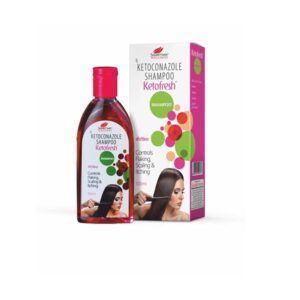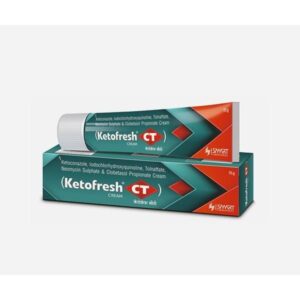IODOCHLORHYDROXYQUINOLONE + TOLNAFTATE + KETOCONAZOLE + NEOMYCIN + CLOBETASOL + CLOBETASOL COMBINATIONS + IODOCHLORHYDROXYQUIN
Iodochlorhydroxyquinolone: Iodochlorhydroxyquinolone is not a recognized drug or compound. It appears to be a combination of iodine, chlorine, hydroxyquinolone, or chloroquine. However, there is no specific information available about the drug “Iodochlorhydroxyquinolone”.
It is possible that you may have mistakenly mixed up or misspelled the drug name. It is essential to ensure the accuracy of the drug name for obtaining reliable information on its use, mechanism of action, dose, and side effects. If you have any additional details or correct information about the drug, please provide it, and I’ll be happy to assist you further.
Tolnaftate: Tolnaftate is an antifungal medication that is primarily used to treat fungal infections of the skin, such as athlete’s foot, jock itch, and ringworm. It is available over-the-counter in various topical forms, including creams, powders, sprays, and solutions.
The mechanism of action of tolnaftate involves inhibiting the growth and reproduction of fungi. It works by interfering with the formation of ergosterol, an essential component of fungal cell membranes. Without ergosterol, the cell membrane becomes weak and leaky, leading to the death of the fungus.
The recommended dose and duration of tolnaftate treatment may vary depending on the specific formulation and the severity of the fungal infection. Generally, it is applied to the affected area of the skin two to three times a day. It is important to continue the treatment for the full prescribed duration, even if symptoms improve, to prevent recurrence.
Common side effects of tolnaftate are mild and usually localized to the application site. These may include skin irritation, itching, and redness. In rare cases, some individuals may experience an allergic reaction to the medication, characterized by rash, hives, difficulty breathing, or swelling of the face, lips, tongue, or throat. If any of these severe side effects occur, medical attention should be sought immediately.
It is important to note that tolnaftate is specifically indicated for the treatment of fungal infections and should not be used for other types of skin conditions without proper medical guidance. Additionally, it is always recommended to consult a healthcare professional before starting any new medication to ensure safety and appropriate use.
Ketoconazole: Ketoconazole is an antifungal medication that is used to treat various fungal infections, including those affecting the skin, nails, and internal organs. It belongs to a class of drugs known as imidazoles.
The mechanism of action of ketoconazole involves inhibiting the synthesis of ergosterol, a key component of fungal cell membranes. This disruption leads to cell membrane damage and ultimately results in the death of the fungi.
Ketoconazole is available in different formulations, such as tablets, creams, shampoos, and foams, which are used depending on the site and type of infection. Oral ketoconazole tablets are commonly prescribed for systemic infections, while topical forms are used for superficial infections of the skin, scalp, or nails.
The recommended dose of oral ketoconazole for most fungal infections is usually 200mg once daily, although the exact dose and duration of treatment may vary depending on the specific condition being treated. Topical ketoconazole products are typically applied once or twice daily, as directed by the healthcare provider.
While ketoconazole is generally well-tolerated, it may also produce some side effects. Common side effects of oral ketoconazole include nausea, vomiting, abdominal pain, headache, dizziness, and changes in taste sensation. It may also have some effects on other drugs due to its interactions with various enzymes and transporters in the body. Rare but serious side effects include severe liver problems, adrenal insufficiency, and allergic reactions.
Topical ketoconazole products can cause local skin reactions, such as itching, redness, irritation, and dryness. In rare cases, these products may cause allergic reactions or other severe skin reactions.
As with any medication, it is important to follow the prescribed dose, duration, and instructions provided by the healthcare provider when using ketoconazole. If any concerning side effects occur, it is crucial to seek medical attention promptly.
Neomycin: Neomycin is an antibiotic drug that is commonly used to treat or prevent bacterial infections. It belongs to the class of drugs called aminoglycosides.
Neomycin works by inhibiting the synthesis of bacteria and interfering with their protein production. It achieves this by binding to the bacterial ribosomes, causing misreading of the genetic code and ultimately leading to the death of the bacterial cells.
This drug is typically administered orally, but it can also be used topically. The dose and duration of treatment will depend on the specific infection being treated, as well as the patient’s age and overall health. It is important to follow the doctor’s instructions and complete the full course of treatment in order to effectively eradicate the infection.
Like other antibiotics, neomycin can cause certain side effects. The most common side effects include nausea, vomiting, diarrhea, and stomach upset. It is also known to cause skin irritation and allergic reactions, such as itching, rash, and swelling. In rare cases, the use of neomycin might lead to serious kidney damage or hearing loss, particularly if used for prolonged periods or at high doses.
It is important to inform your healthcare provider about any allergies or pre-existing medical conditions before starting neomycin treatment. Additionally, neomycin can interact with other medications, so it is crucial to disclose all medications, including over-the-counter drugs and supplements, to your doctor.
Overall, neomycin is a widely used antibiotic that is effective in treating bacterial infections. However, its use should be carefully monitored by a healthcare professional to minimize the risk of adverse effects.
Clobetasol: Clobetasol, available as a cream, gel, lotion, foam, or ointment, is a potent corticosteroid medication used mainly for the treatment of various skin conditions. It is commonly prescribed for the treatment of inflammatory skin conditions such as eczema, psoriasis, and dermatitis.
The mechanism of action of clobetasol involves its potent anti-inflammatory and immunosuppressive properties. It works by reducing inflammation, itching, and redness of the skin by inhibiting the release of inflammatory substances in the body.
The recommended dose of clobetasol varies depending on the form of the medication and the severity of the skin condition being treated. Generally, a thin layer of the cream or ointment should be applied to the affected area(s) once or twice daily. It is important to follow the instructions provided by the healthcare professional and not exceed the prescribed dose.
While clobetasol is effective in controlling various skin conditions, it can also cause some side effects. Common side effects include burning, stinging, irritation, dryness, or redness at the application site. Prolonged use or excessive application of clobetasol may increase the risk of side effects such as skin thinning, discoloration, stretch marks, acne, or increased hair growth. Rarely, systemic side effects like adrenal suppression (which can cause hormonal imbalances) or allergic reactions may occur, especially when used in large amounts or on extensive areas of the body.
It is important to inform your healthcare provider if you experience any severe or persistent side effects while using clobetasol. They can provide guidance on the appropriate use of the medication and discuss any concerns or issues you may have.
Clobetasol Combinations: Clobetasol Combinations is a medication that contains clobetasol, a potent corticosteroid, and is used to treat various skin conditions such as psoriasis, eczema, and dermatitis. It is available in the form of creams, ointments, gels, and solutions.
The primary mechanism of action of clobetasol is its anti-inflammatory and immunosuppressive properties. It works by decreasing the activity of immune cells and inhibiting the release of certain chemicals that cause inflammation in the skin. This helps in reducing redness, itching, and swelling associated with skin conditions.
The dose of Clobetasol Combinations depends on the severity of the condition being treated and the specific formulation used. It is typically applied thinly to the affected area once or twice daily or as directed by the healthcare provider. However, it is important to follow the instructions provided by the prescribing doctor or the package insert.
Like other corticosteroids, Clobetasol Combinations may cause some side effects. These can include skin thinning, dryness, burning or stinging sensation, itching, and changes in skin pigmentation. Prolonged use or excessive application may also lead to systemic absorption of the drug, which can result in various side effects including adrenal suppression, Cushing’s syndrome, and other hormonal imbalances. Additionally, long-term use of high-potency corticosteroids like clobetasol may increase the risk of developing skin atrophy and telangiectasia (dilation of blood vessels).
It is important to note that Clobetasol Combinations should only be used as directed by a healthcare professional and for the specified duration. If any concerning side effects occur or if there is no improvement in the skin condition, it is advised to contact a doctor.
Iodochlorhydroxyquin: Iodochlorhydroxyquin, also known as diiodohydroxyquinoline or iodoquinol, is an antimicrobial medication used primarily in the treatment of parasitic infections.
Mechanism of action:
The exact mechanism of action of iodochlorhydroxyquin is not fully understood. However, it is believed to work by interfering with the metabolism of parasites, leading to their death. It has activity against a variety of protozoa and some bacteria.
Use:
Iodochlorhydroxyquin is primarily used to treat infections caused by the parasite known as Entamoeba histolytica, which can cause amoebic dysentery. It may also be prescribed for Cryptosporidium parvum infections. Additionally, it has been used off-label for the treatment of certain types of bacterial infections.
Dose:
The dosage of iodochlorhydroxyquin may vary depending on the specific condition being treated and the individual patient. It is typically taken by mouth and is available in tablet or suspension form. It is important to follow the dosage instructions provided by a healthcare professional.
Side effects:
Common side effects of iodochlorhydroxyquin may include gastrointestinal disturbances such as nausea, vomiting, and diarrhea. These side effects are usually mild and resolve on their own. In rare cases, allergic reactions and skin rashes may occur. Long-term use or high doses of iodochlorhydroxyquin may result in changes in color vision or visual disturbances, though these side effects are also rare.
It is important to note that iodochlorhydroxyquin is contraindicated in individuals who have a known hypersensitivity to the medication. It should be used with caution in patients with a history of thyroid disease, liver disease, or blood disorders.
As with any medication, it is always recommended to consult with a healthcare professional before starting or stopping any treatment, and to report any side effects experienced during the use of iodochlorhydroxyquin.


